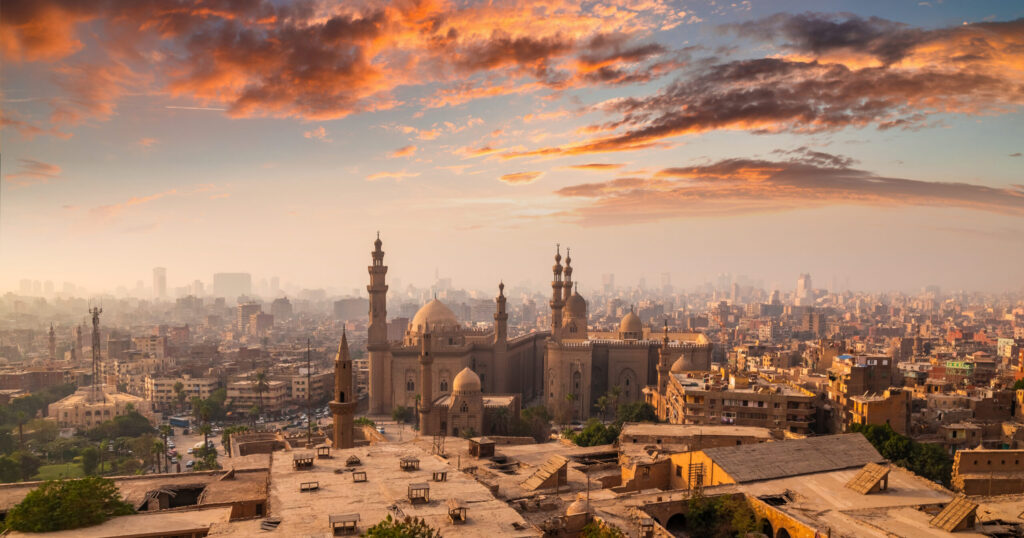As the next edition of COP (Conference of the Parties) looms over the horizon, we take a brief guided tour of events since COP26, and what we hope for from COP27 – through the lens of the tourism industry. In diplomatic parlance, “the parties” refers to the 197 nations that agreed to a new environmental pact, the United Nations Framework Convention on Climate Change, at a meeting in 1992.
Although it has been thirty years since the first conference took place, it somehow feels like that this is only the second year. Perhaps it’s because the whole world – having been ‘pushed’ into consciousness by the COVID pandemic – became more sensitive to questions linked to climate change. In fact, last year, COP26 had a huge global resonance and a variety of organisations and stakeholders joined and added their voices to the negotiations – and when they couldn’t, they at least tried.
In any case, while the road continues to be bumpy, we need to ask ourselves whether the calls for action declared in Glasgow have been answered or not, and what new inspired actions will be brought to the table to share with other stakeholders.

2021 was an important year
The planet continues to scream for help and constant attention and, although we haven’t been able to slow down the speed of its critical downward run, something has drastically changed in our collective consciousness.
At COP26 and for the very first time, participating parties were invited to report on their progress in implementing the 2015 Paris Agreement. Beyond the massive movement of civil society organisations and third sector representatives, COP26 was a decisive moment for our industry.
On 4th November 2021 the Glasgow Declaration was launched. Born from a collaboration between the UNWTO (World Tourism Organization), the UNEP (United Nations Environment Programme), VisitScotland, The Travel Foundation and Tourism Declares a Climate Emergency, the declaration launched with 300 signatory partners and brought the sector together in unity, moved by a set of extremely practical goals.

According to Lebawit Lily Girma, travel journalist at Skift, it was a major turning point for the travel industry and, she goes on to say, before this there were no uniform guidelines for the tourism industry on how to align with the Paris Agreement, and no uniform commitment or leadership.
In this case the solemnity, typical of any declaration, finds sharpness in its clear vision:
We declare our shared commitment to unite all stakeholders in transforming tourism to deliver effective climate action. We support the global commitment to halve emissions by 2030 and reach Net Zero as soon as possible before 2050. We will consistently align our actions with the latest scientific recommendations, so as to ensure our approach remains consistent with a rise of no more than 1.5°C above pre-industrial levels by 2100.
The message is explicit: the time for talking is finished. We need to enter the era of facts and action.
The invitation to the timid, or just too busy, tourism actors is bold: it is time to show up and make yourself accountable.
The declaration, in fact, is intended to only be a starting point: the commitment made with the signature needs to be proved and maintained over time, otherwise the signature will be removed!
No space for greenwashing then, and more opportunities for the greenhushing ‘perpetrators’ to come out and positively inspire more fellow colleagues, because this is also happening. As a response to greenwashing practices, nowadays many companies understate their sustainability impact – greenhushing – mainly for the fear of being accused of greenwashing, and everyone seems to have adopted it indiscriminately into their vocabulary.
Inspire Global joins in warmly welcoming the opportunity for companies to show us – beyond simply disclosing – their sustainability practices.
This is the time for proof.


Numbers do matter
Often, but not always, the proof comes with numbers: tangible and clear figures that matter.
When we look at the Glasgow Declaration, it is noticeable that numbers count. First, it adopts a science-based approach which prioritises numbers not opinions. We need to keep global warming to below 1.5°C, because science tells us that a temperature between 1.7°C and 1.8°C would represent a life-threatening level. We have reached a point where we need to face the reality of these facts, as much as it might feel scary and perhaps even painful.
While providing a cold immersion into reality, numbers also help us to move forwards, by giving us parameters and clear guidance. If we want to make a change we need to measure where we are and monitor where we are going, along the way.
There are also other numbers that matter:
- 300: the number of original signatories that, four months after the launch, had already surpassed the 500-mark and which now also includes Expedia, Booking Holding and Condé Nast.
- 12: twelve months is the time frame given to the signatories to present their business action plan, which will be publicly shared in a clear invitation to accountability.
- 5: the number of proposed pathways: 1) Measure, 2) Decarbonise, 3) Regenerate, 4) Collaborate and 5) Finance.



Although numbers are central to a logical approach and helpful in fighting irrational and emotional resistance, the language of the declaration also contains elements of poetry.
Especially when it talks about restoring nature and our relationship with it.
When we arrive at the core of the issue, concepts are usually transparent and extremely simple once they have lost all their unnecessary embellishments: the planet is not in a healthy shape and our well-being – personal, social, and economic well-being – depends on it. We need to act. It is a survival call.
The way we have been using – and dare I say abusing – the planet has been predatory.
We now need to replace that model and start using a more balanced approach.

Preparing for 27 - a geographical sign?
On the 30th anniversary of the adoption of the UN Framework Convention on Climate Change (UNFCCC), this year the COP27 event will be held in Egypt. After so many years of discussions but timid action, should we read the location chosen as a hopeful sign?
Cairo, together with Beijing and New Delhi, has one of the worse air pollution levels in the world, with concentrations of fine particles eight times higher than the maximum set by the World Health Organisation, as reported by France 24 English. At the time of writing this article, the quality of air in Cairo was classified as unhealthy for sensitive groups and people in those groups are invited to limit their outdoor activities and use a face mask when in the street.
Although the event will be held in the greener city of Sharm El-Sheikh, we should ask ourselves if this could be an opportunity to expose and face the unsolved pollution problems of many big cities and commit to writing a new story.
In addition to the air quality standard, the fact that the COP27 is on African soil should also help draw attention to the current struggles of the African continent, which is heavily affected by climate change.
As reported by the BBC, based on the available data, currently 17 million people are estimated to be facing food insecurity in east Africa because of drought, making Africa one of the most vulnerable regions in the world. If not tackled in an appropriate way this will have catastrophic consequences for the continent and its inhabitants, let alone the damage to the tourism industry.
So, our question is what can we see in the coming COP27 that could shine a new light on the way we look at the situation?
Here are some hopeful signs.


What we should expect: hot topics and good signs
The discussion on finance support for climate change is one of the big unsolved problems that will probably take up some space.
The promise made by developed countries in 2009 to allocate $100 billion/year to developing countries by 2020 hasn’t been met and it has now been pushed to a new date of 2023 and remains a hot topic on the agenda. The event is structured in themed days, with specific focuses, the first of which is dedicated to finance, which is a good sign of intention to face this issue. Reading from the event page, we learn that they will also discuss innovative and blended finance and financial instruments, tools, and policies with the objective to enhance access, scale up finance and contribute to the transition envisaged and needed, including those related to debt for environment swaps.
Promising.
Besides the finance day, we learn that there will also be a day dedicated to Civil Society and another to Gender. This at least shows a positive attitude to including different stakeholders already active on other levels and to recognising their role and contributions in terms of additional knowledge, perspective, and active engagement.
Again, promising.
We are now looking forward to seeing some resolutive action in the right direction.
Particularly interesting for our industry will be the themed days and discussions on Decarbonization, Energy and Water, and the more general day on Solutions, which we should also follow closely. Promising space to discuss and shape the future.
The full schedule of the thematic days can be found here.
What will make us happy
If we talk about commitments, it seems that the world is still divided into developing and developed countries, because countries contribute to climate change, mitigation and adaptation in different ways, and these should be considered and evaluated on a global level.
Looking forward, this is what we would like to see:
- More support for developing countries, in a spirit of global cooperation.
- More national government support for the indigenous response strategies, to protect biodiversity and apply ancestral knowledge to solve current issues at the destination level.
- More skills, tools, and knowledge to be shared horizontally.

Perhaps we should summarise our hopes in an invitation to go beyond the silo mentality, in a spirit of conscious and responsible multilateral collaboration.
But is that united effort achievable?
In terms of CO2 emissions, the sector has been compared to a country that can be placed in 5th position on the list of the biggest polluters.
And if our industry has been compared to a nation-state to highlight the negatives and its wrongdoing, why shouldn’t we raise and present ourselves in a united way for a good cause, which is also a common cause: to save our biggest and only asset – our planet!
If we think in these terms, whatever governments do, say, promise and sign, we as an industry should not stop, slow down or lose our willingness to commit and maintain our promise to future generations, and to our business too.
Not only to survive, but to continue thriving.

Inspire Global is a signatory of the Glasgow Declaration. Have you made your declaration yet? If not, we would like to invite you to become a signatory and share the news with our community.
Words by Elisa Spampinato


Recent Posts
Categories